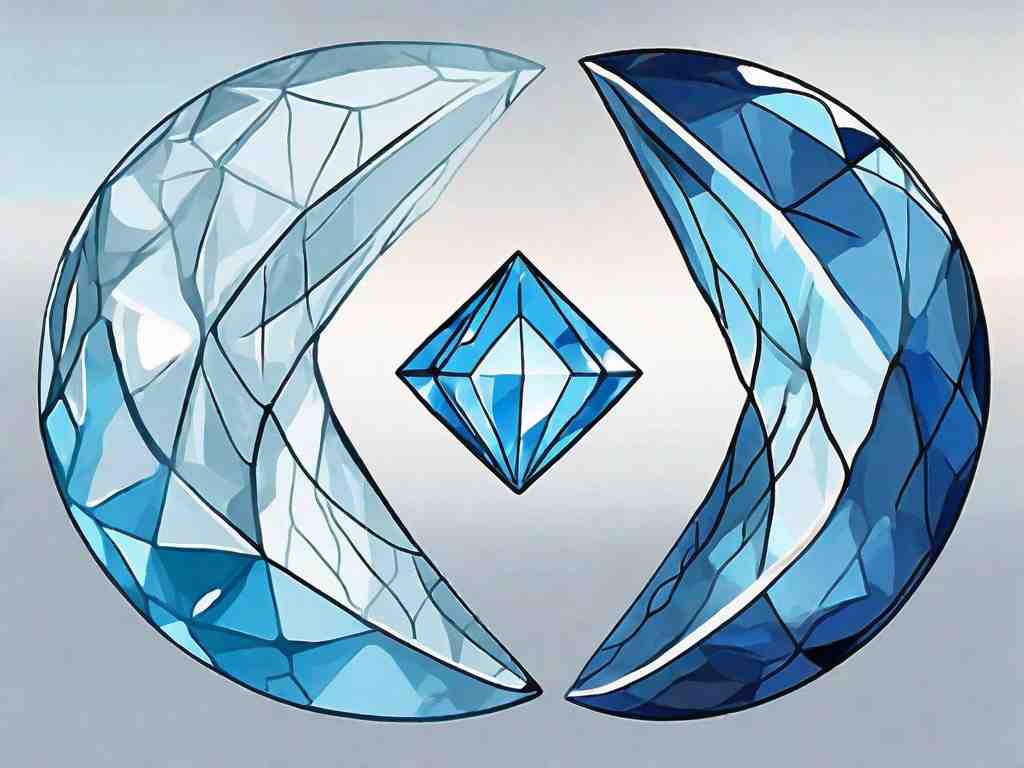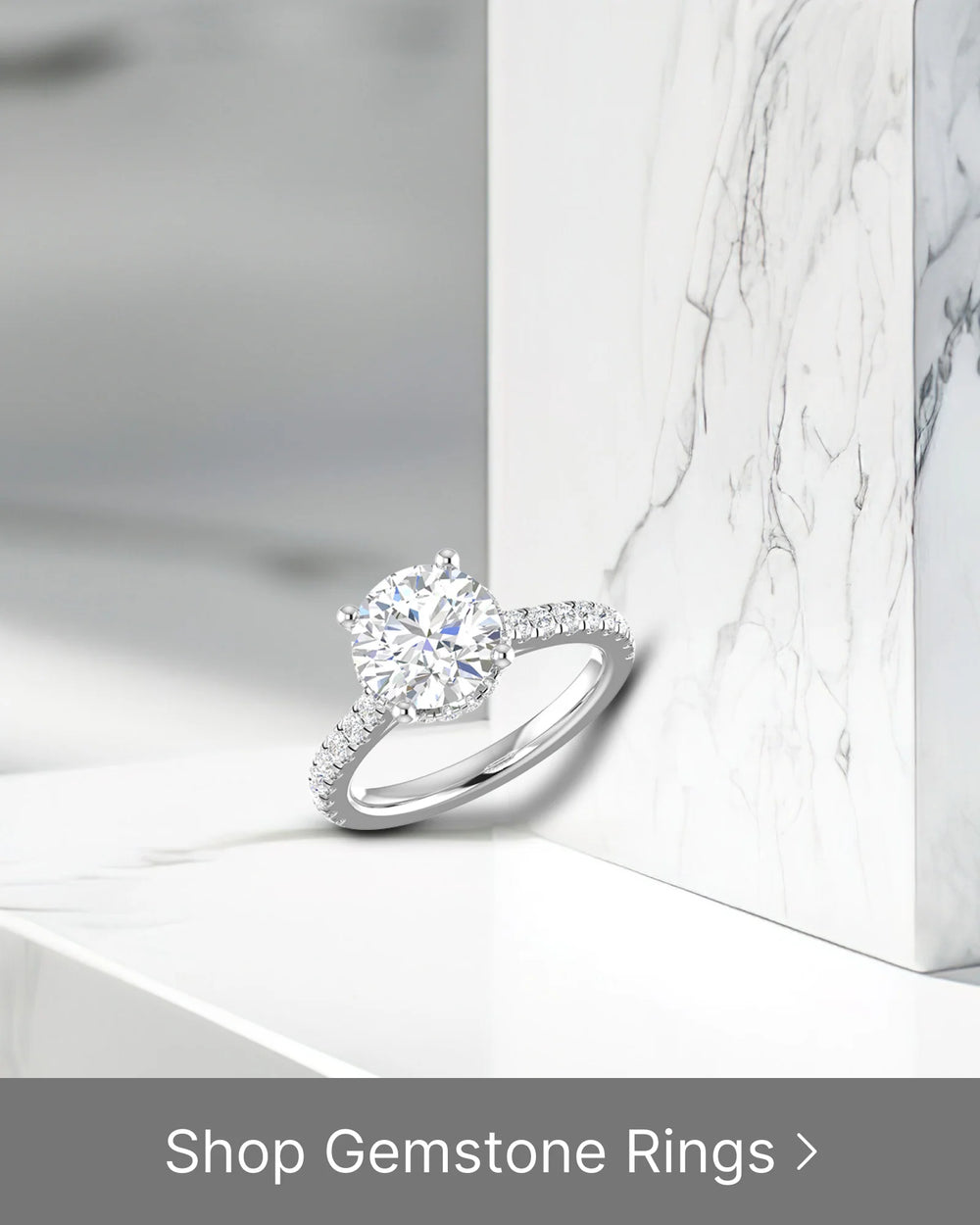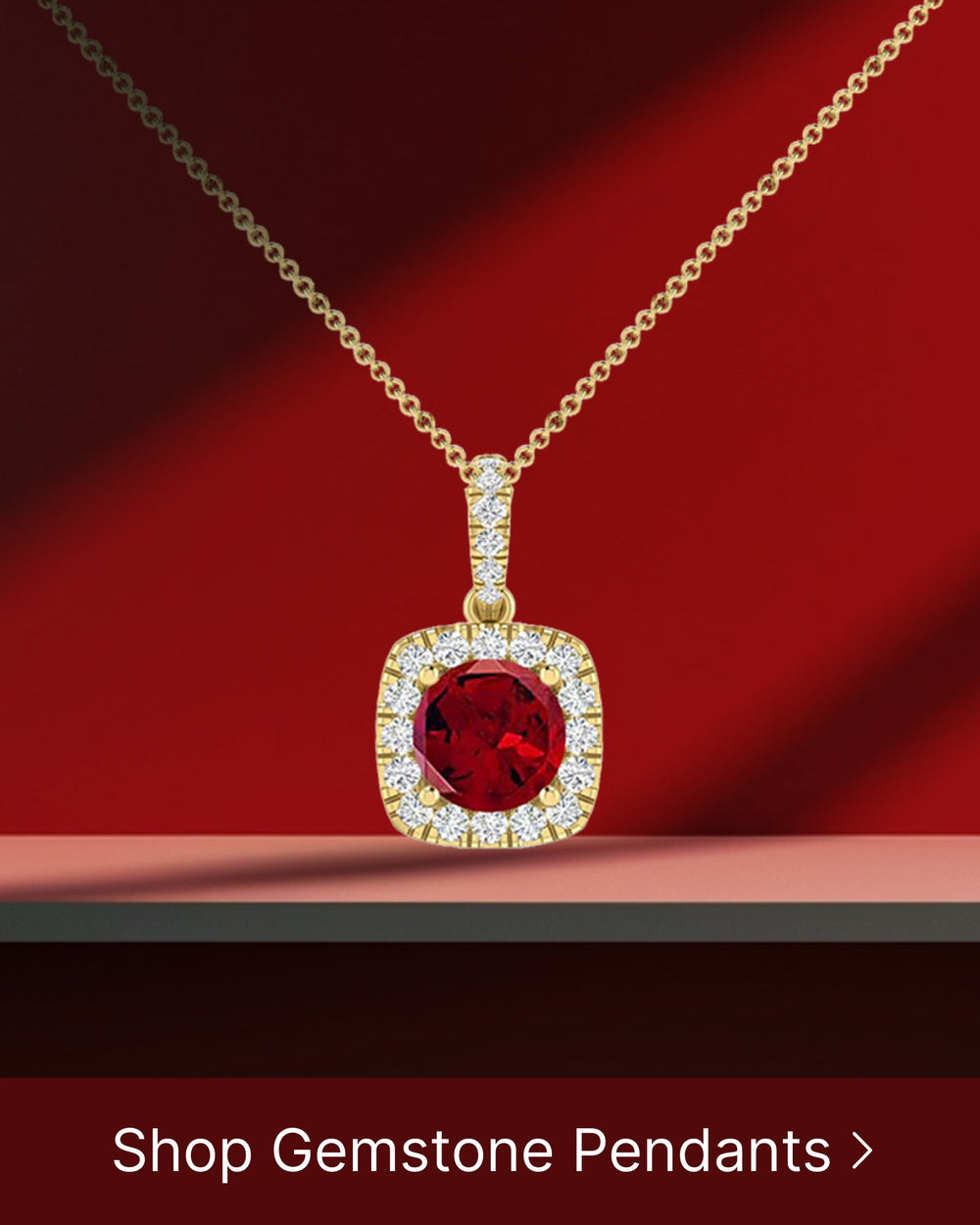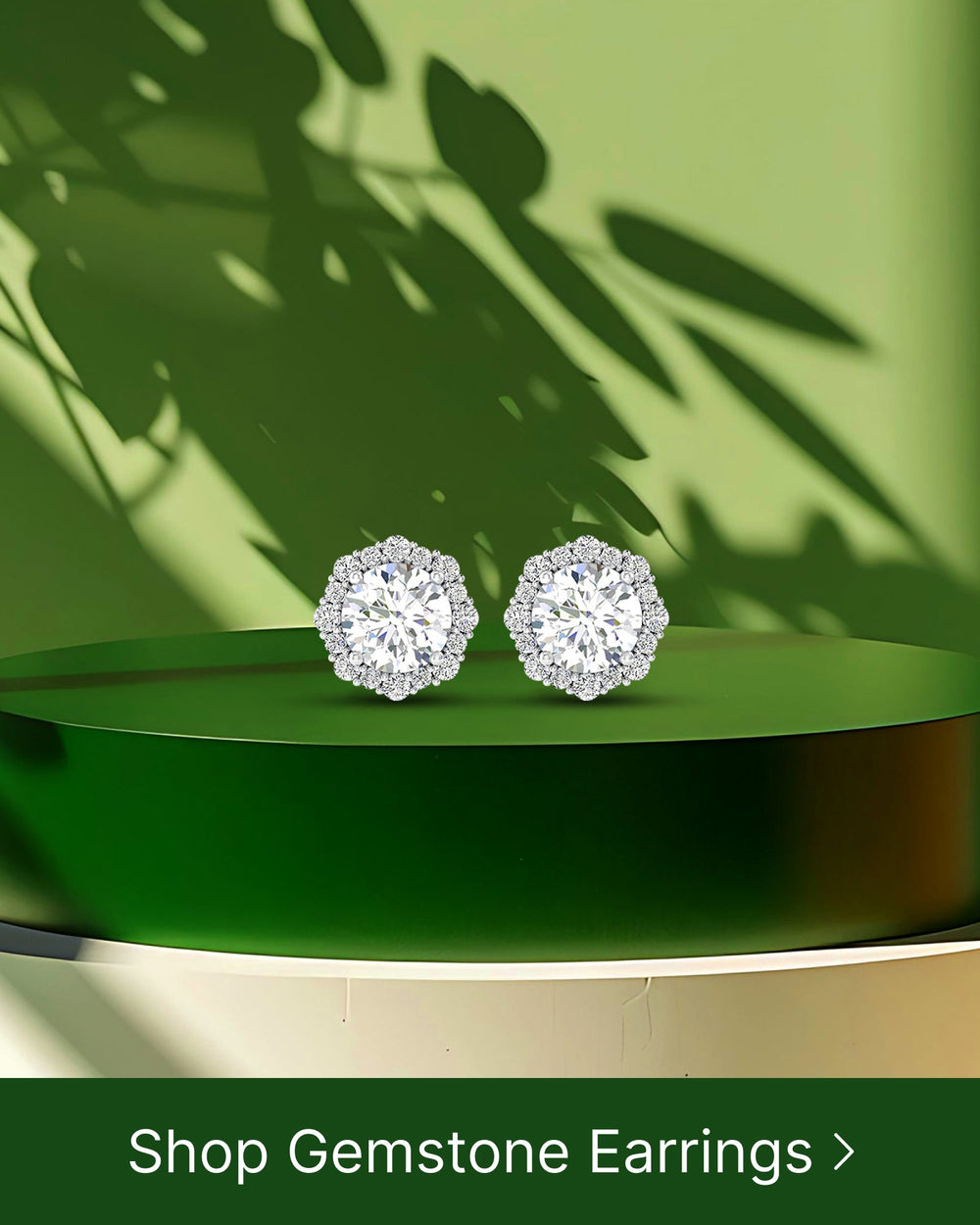Blue sapphire and blue topaz are two popular gemstones known for their stunning blue hues. While they may appear similar, there are distinct differences between the two that make each unique. Understanding these differences can help you make an informed choice when it comes to selecting the perfect gemstone for your jewelry or collection.
Understanding Blue Sapphire and Blue Topaz
Both blue sapphire and blue topaz are gemstones that have captured the attention of humans for centuries. From their formation to their historical significance, there is much to explore about these captivating gemstones.
The Formation of Blue Sapphire and Blue Topaz
Blue sapphire is a precious gemstone that is formed deep within the Earth's crust under intense heat and pressure. It belongs to the corundum mineral family and gets its characteristic blue color from trace elements of iron and titanium present during its formation.
As the Earth's crust undergoes tectonic movements, immense pressure and heat cause the minerals to crystallize and form gemstones. Blue sapphire, with its stunning blue hue, is a result of this geological process that takes place over millions of years.
On the other hand, blue topaz is a semi-precious gemstone that is formed in the Earth's crust through a combination of volcanic activity and the action of hot water solutions. It belongs to the silicate mineral group and derives its blue color from impurities such as iron and chromium.
When volcanic eruptions occur, they release molten rock called magma. This magma, rich in minerals, rises to the Earth's surface and cools down rapidly, forming igneous rocks. Over time, as these rocks undergo weathering and erosion, the blue topaz crystals are exposed and can be found in various geological formations.
The Historical Significance of Blue Sapphire and Blue Topaz
Blue sapphire has a rich historical significance that spans across different cultures and civilizations. It has been prized as a symbol of wisdom, nobility, and protection. In ancient times, it was believed that the sky itself was tinted blue by the reflection of blue sapphires.
Throughout history, blue sapphires have adorned the crowns and jewelry of royalty and nobility. They were believed to possess mystical powers and were often worn as talismans to ward off evil spirits and bring good fortune. The allure of blue sapphires continues to captivate people to this day, with their deep blue color symbolizing loyalty, trust, and inner peace.
Blue topaz, on the other hand, has a more recent history that dates back a few centuries. Once believed to have great healing powers, it gained popularity as a stone of communication and love. It was also used as a talisman for protection against dangers and evil spirits.
During the Renaissance period, blue topaz was highly valued by European royalty and was often used to create exquisite jewelry pieces. It was believed to enhance one's ability to express oneself and strengthen relationships. The vibrant blue color of blue topaz has always been associated with calmness and serenity, making it a popular choice for those seeking inner peace and emotional balance.
As time went on, blue topaz continued to be cherished for its beauty and symbolism. It became a popular gemstone for engagement rings and anniversary gifts, symbolizing love, fidelity, and commitment.
Whether it's the deep blue allure of blue sapphire or the vibrant blue hue of blue topaz, these gemstones continue to fascinate and enchant people around the world. Their formation and historical significance add to their mystique, making them truly remarkable gemstones that have stood the test of time.
The Physical Characteristics of Blue Sapphire and Blue Topaz
While blue sapphire and blue topaz may share a similar color, their physical characteristics set them apart. Let's explore these unique features.
Color and Clarity: Sapphire vs Topaz
Blue sapphire is renowned for its deep blue hue, which is often described as cornflower blue or royal blue. The finest blue sapphires exhibit a vivid, intense, and even color distribution, with minimal inclusions that can affect clarity.
In addition to its stunning blue shades, blue sapphire can also display other colors, known as "phenomenal colors." These include color-changing sapphires, which exhibit different hues under different lighting conditions, and star sapphires, which have a distinct star-shaped pattern that appears when light is reflected off the gem's surface.
On the other hand, blue topaz is available in a range of shades, including sky blue, Swiss blue, and London blue. It is known for its clarity and transparency, with very few inclusions visible to the naked eye. The color of blue topaz can be enhanced through a process called irradiation, which exposes the gemstone to radiation to achieve a more vibrant blue hue.
Hardness and Durability: Sapphire vs Topaz
Blue sapphire is one of the hardest gemstones, ranking 9 on the Mohs scale of hardness. This makes it extremely durable and suitable for everyday wear. Its toughness ensures that it can withstand daily wear and tear without easily getting scratched or damaged.
Furthermore, blue sapphire is highly resistant to chemical corrosion, making it an excellent choice for jewelry that may come into contact with various substances. Its durability and resistance to fading make it a popular gemstone for engagement rings and other pieces of jewelry that are meant to be worn for a lifetime.
While blue topaz is also relatively hard, with a Mohs hardness of 8, it is not as durable as sapphire. It requires more care to prevent scratching and damage, especially if worn daily or in a setting that exposes it to potential impacts. It is recommended to remove blue topaz jewelry before engaging in activities that may subject it to excessive force or abrasion.
It is worth noting that both blue sapphire and blue topaz can be enhanced through various treatments to improve their color and clarity. Heat treatment is commonly used to enhance the color of blue sapphires, while blue topaz can undergo irradiation and heat treatment to achieve its desired hue. These treatments are widely accepted in the gemstone industry and do not significantly affect the value of the gemstones.
The Symbolism and Healing Properties of Blue Sapphire and Blue Topaz
In addition to their physical characteristics, both blue sapphire and blue topaz carry symbolism and are believed to possess healing properties.
The Symbolic Meanings of Blue Sapphire
Blue sapphire is associated with wisdom, prophecy, and divine favor. It is considered a stone of royalty and was highly valued by ancient kings and queens. Blue sapphire is said to enhance one's intuition and provide clarity of thought, making it a sought-after gemstone for those seeking inner peace and spiritual growth.
The Healing Properties of Blue Topaz
Blue topaz is believed to have calming and soothing properties. It is said to promote emotional healing and balance, helping individuals express their thoughts and emotions in a clear and concise manner. Blue topaz is also associated with enhancing concentration and learning abilities, making it a popular choice for students or those involved in creative endeavors.
The Market Value of Blue Sapphire and Blue Topaz
When it comes to market value, blue sapphire is generally regarded as more valuable and sought after than blue topaz. The rarity, durability, and historical significance of blue sapphire contribute to its higher price tag.
Factors Affecting the Price of Blue Sapphire
The quality of blue sapphire is determined by factors such as color, clarity, cut, and carat weight. The most valuable blue sapphires are those with a vibrant and even blue color, excellent clarity, and a well-cut shape that maximizes the gemstone's beauty.
Factors Affecting the Price of Blue Topaz
When it comes to blue topaz, factors such as color, clarity, and size play a significant role in determining its value. Deeper, more saturated blues are generally more desirable, and stones with minimal inclusions are considered more valuable.
How to Choose Between Blue Sapphire and Blue Topaz
When deciding between blue sapphire and blue topaz, there are a few key considerations to keep in mind.
Considerations for Jewelry Design
Blue sapphire's deep blue hue and durability make it an excellent choice for engagement rings, pendants, and earrings that can withstand daily wear. Its rich color adds elegance and sophistication to any design.
Blue topaz, with its wide range of blue shades, is versatile and can be incorporated into various jewelry designs. It often complements lighter outfits and can be a great choice for statement pieces or birthstone jewelry.
Maintenance and Care for Sapphire and Topaz Jewelry
As mentioned earlier, blue sapphire's hardness and durability make it a low-maintenance gemstone. Regular cleaning with mild soapy water and avoiding exposure to harsh chemicals or extreme temperature changes will help maintain its beauty.
Blue topaz requires similar care, but as it is slightly less durable, it is advisable to remove topaz jewelry when engaging in physical activities or when there is a risk of impact or scratching.
In conclusion, while blue sapphire and blue topaz may share a beautiful blue color, they have distinct differences in terms of their formation, historical significance, physical characteristics, symbolism, healing properties, market value, and suitability for different jewelry designs. Choosing between blue sapphire and blue topaz ultimately depends on personal preferences, budget, and intended usage. Whichever gemstone you choose, both blue sapphire and blue topaz are sure to add a touch of elegance and timeless beauty to your jewelry collection.





